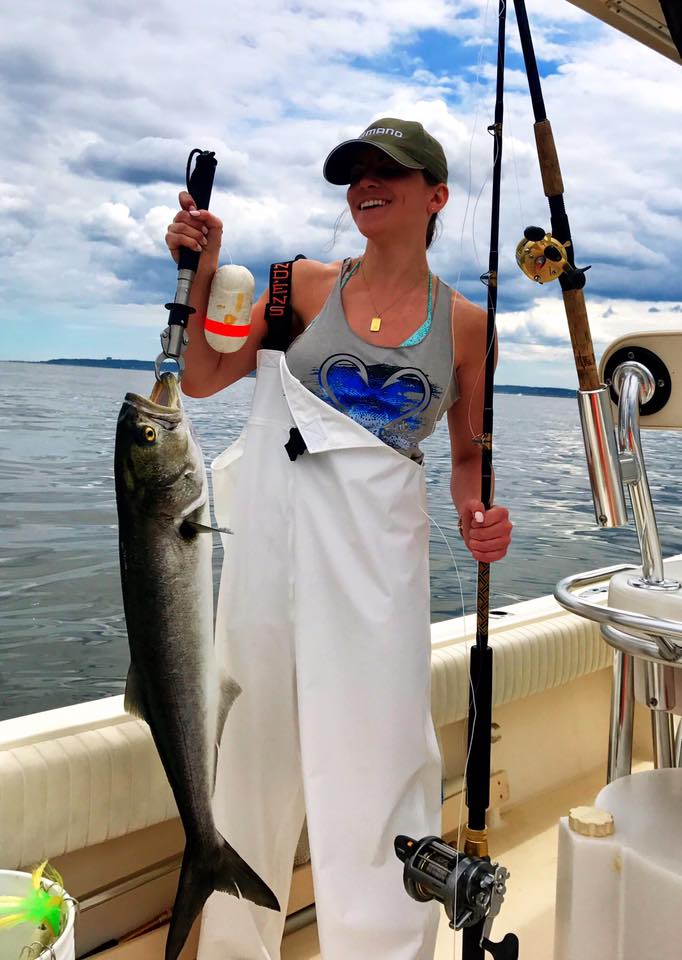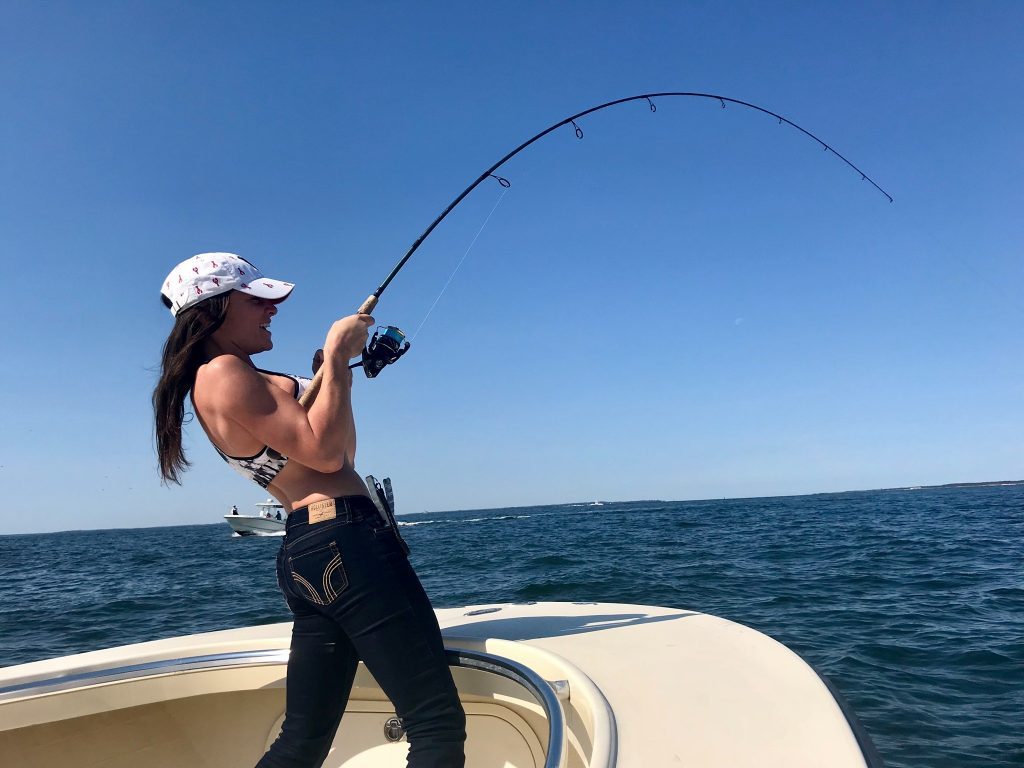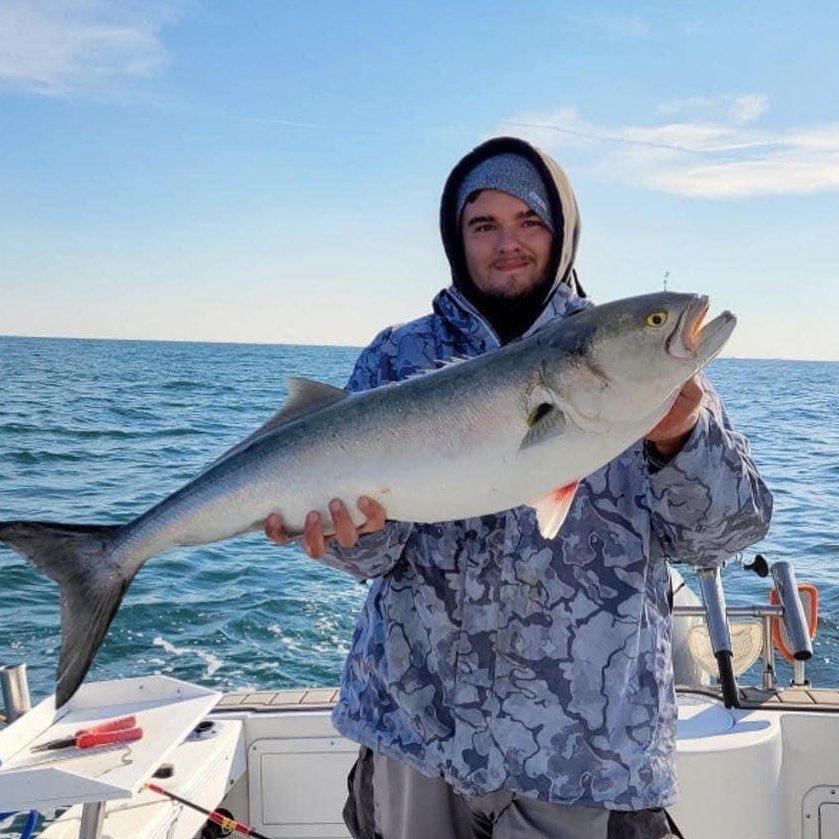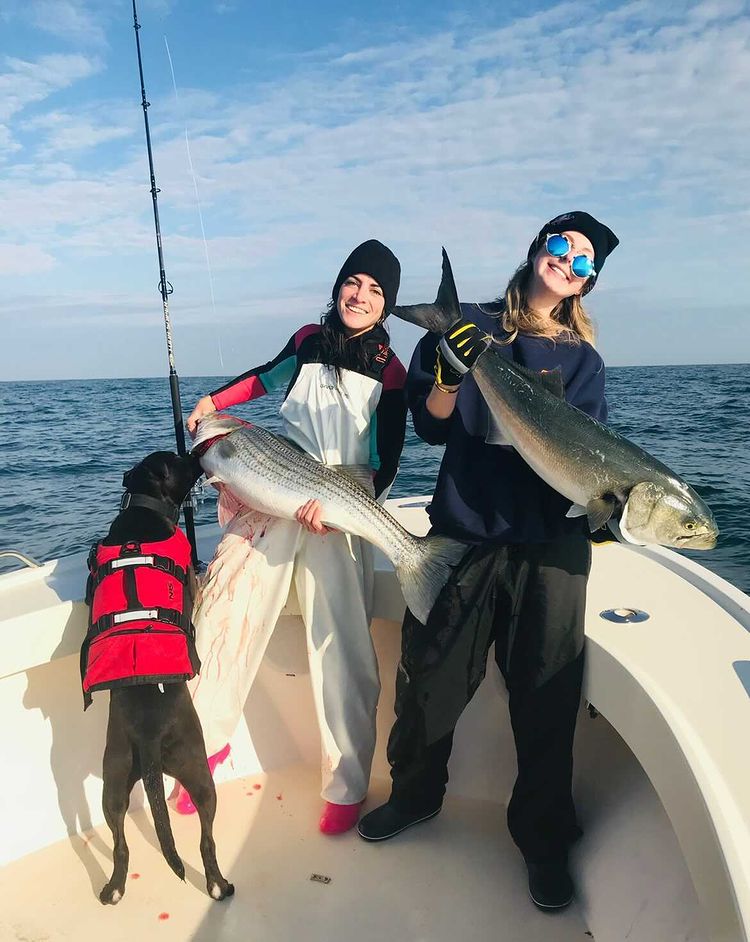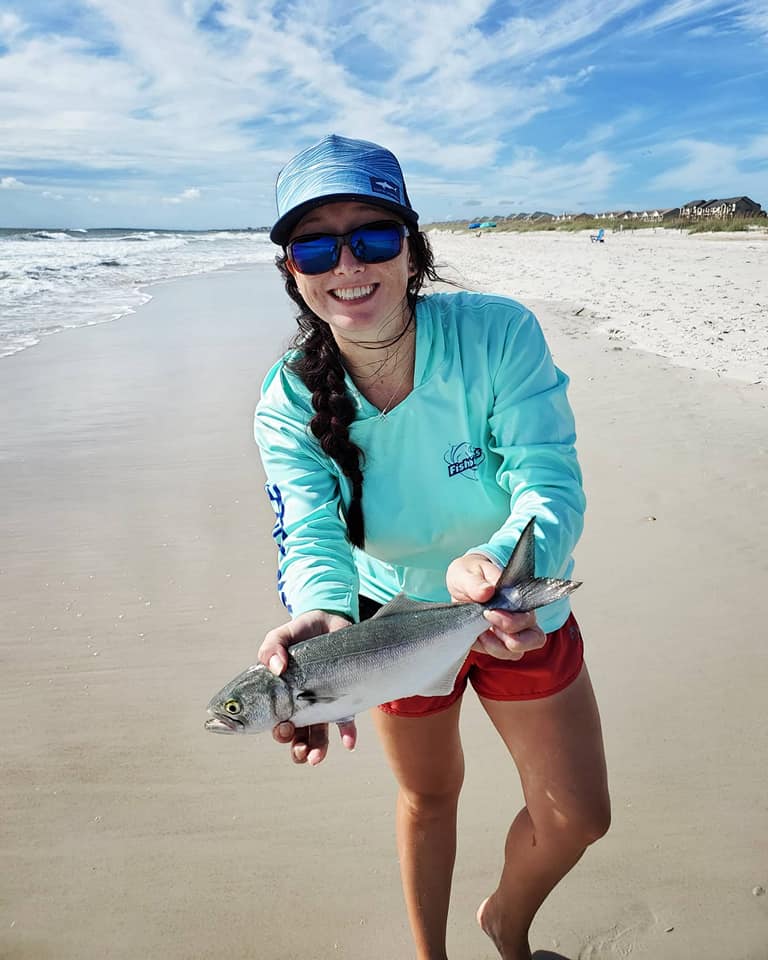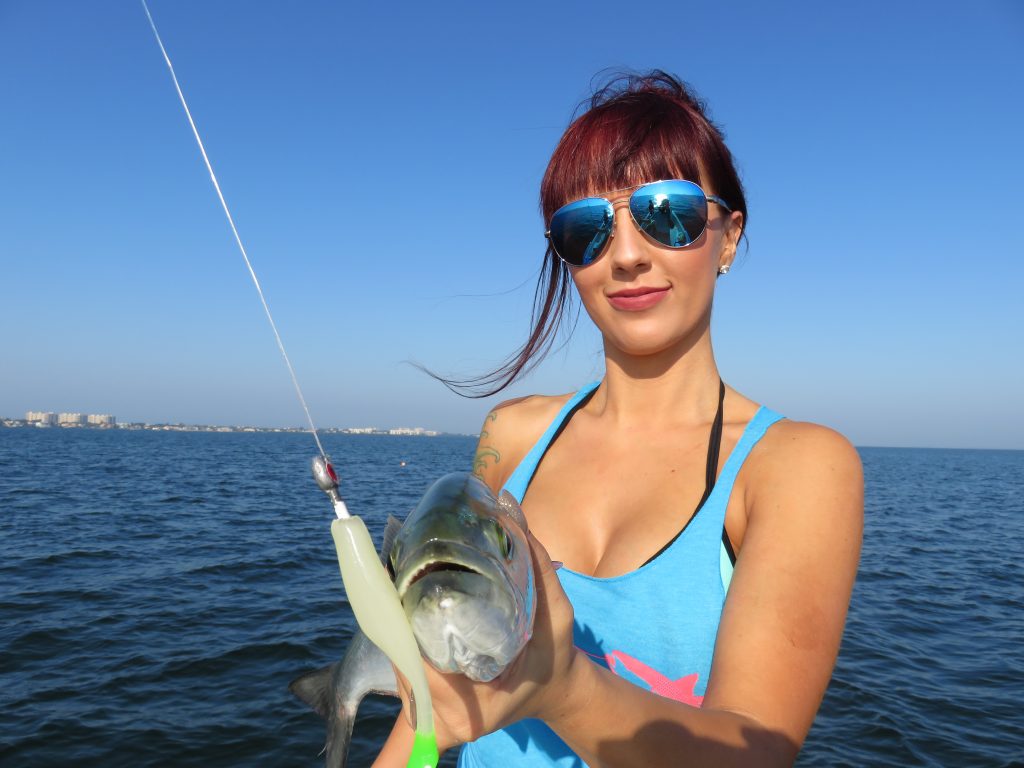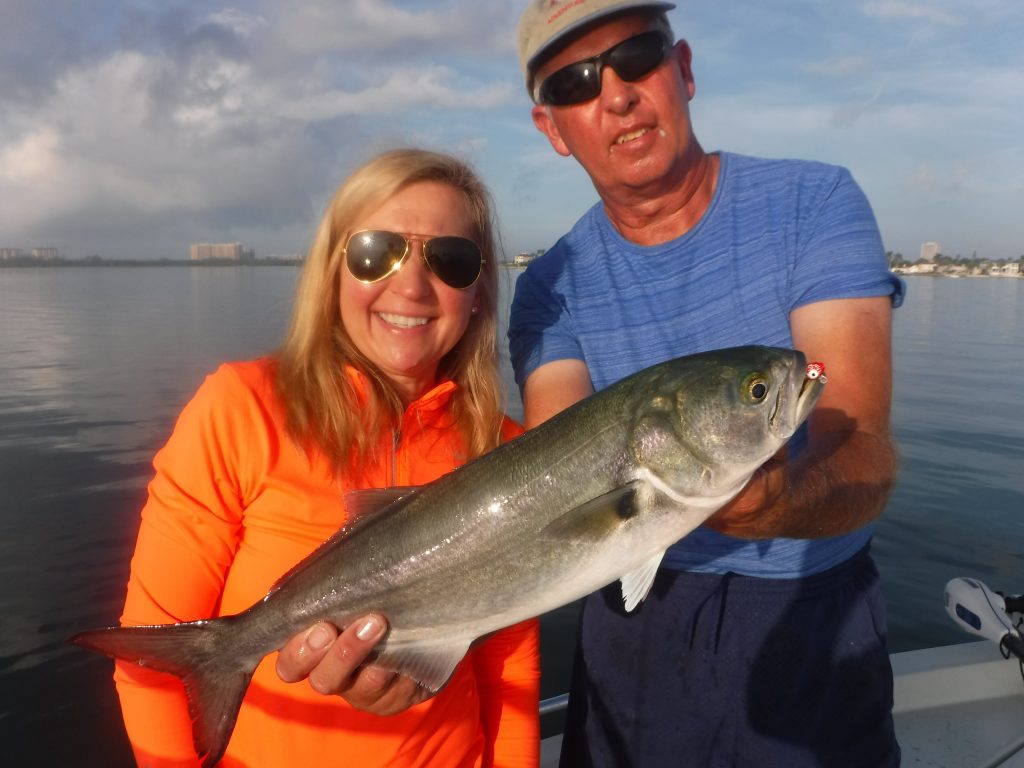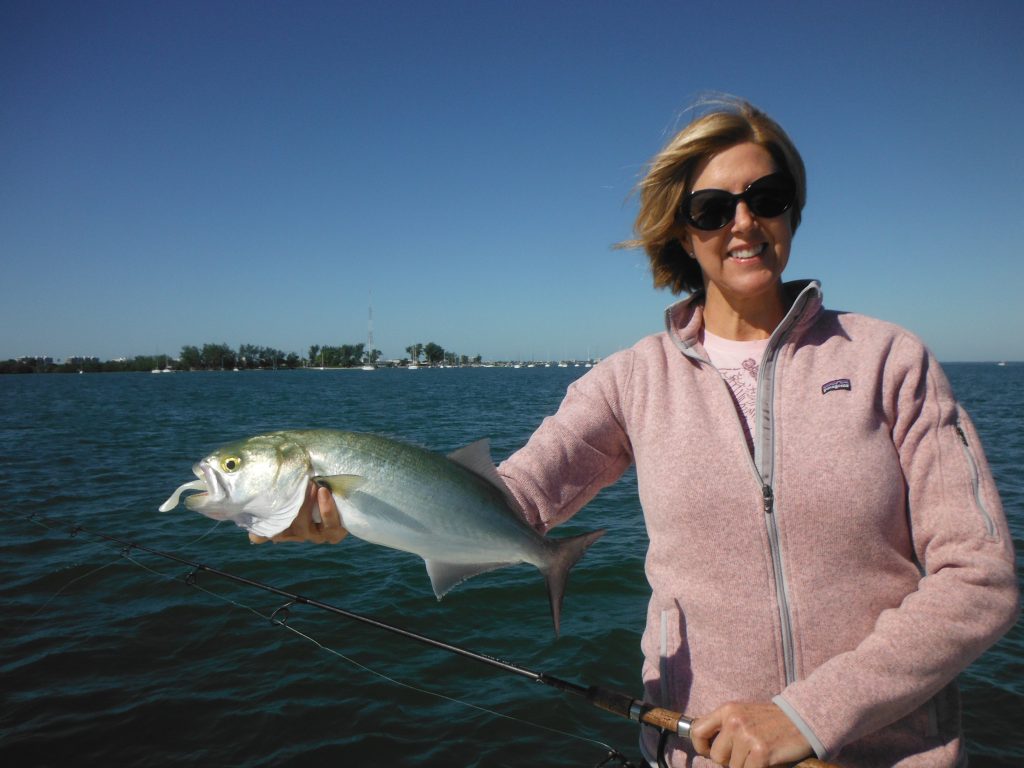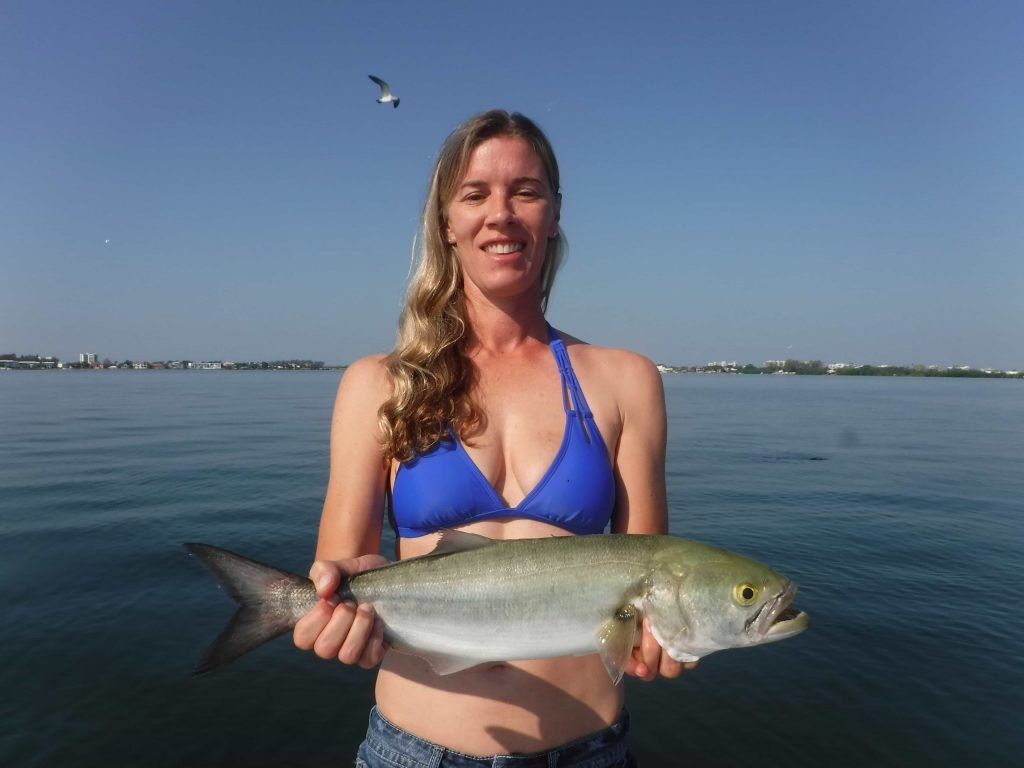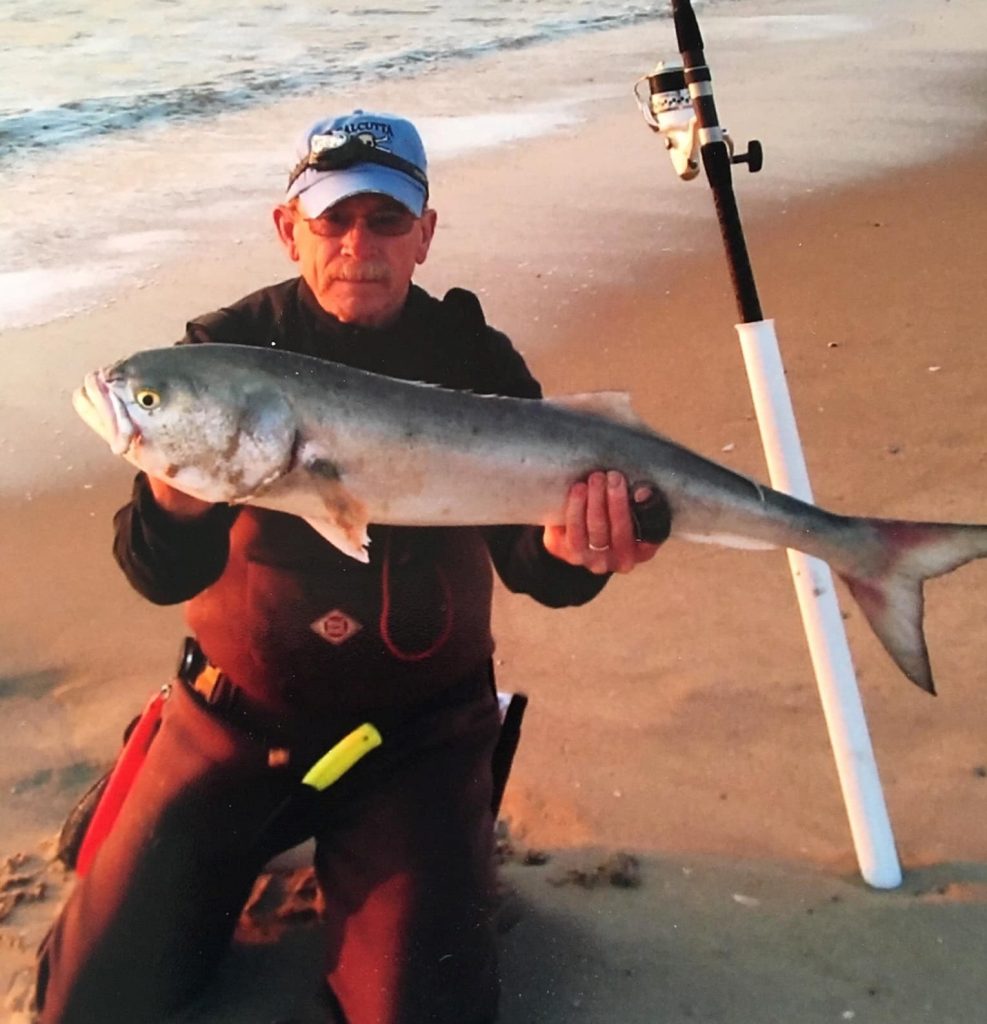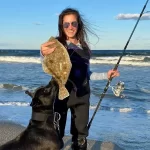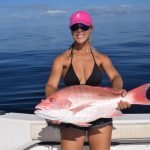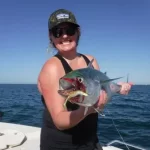How to Catch Bluefish – a Complete Guide
This article will thoroughly cover how to catch bluefish. Anglers catch bluefish using a wide variety of angling techniques. Both live and artificial lures work well. While not considered the best eating of fish species, smaller bluefish are decent when bled and eaten fresh. They put up a terrific battle!
Bluefish are a very aggressive saltwater game fish species that are found throughout the world. They are the sole member of the family Pomatomidae. Bluefish school in large numbers and readily take lures and natural baits.
How to catch bluefish
Bluefish are caught by anglers using several different techniques. In Florida where I run fishing charters, most of our bluefish are caught by anglers casting lures. Live bait catches fish as well. Further north, trolling is productive as is chumming and chunking. Surf anglers catch bluefish from Texas to New England.
Best bluefish fishing tackle
The tackle used by anglers fishing for bluefish will vary greatly. The technique is a factor, but the primary consideration is the size of the fish in the area. Here in Sarasota where I fish, bluefish average 2-5 pounds and light spinning tackle is the best choice. Anglers fishing off the New England coast use heavier conventional tackle for larger bluefish.
A 7′ medium spinning rod with a “fast” action aired with a 3000-4000 spinning reel and spooled with 20 lb braided line is a great all round combo for bluefish. This will allow anglers to cast lures when bluefish are seen feeding on the surface, yet still have enough muscle to handle a decent fish.
Anglers can shop at Amazon for a Daiwa Black Gold reel and St Croix Triumph 7′ MF rod spinning combo in this link.
Conventional tackle works better when trolling lures or when chunking or free lining for larger bluefish. Most saltwater anglers already have a serviceable outfit. 6 ½ foot medium heavy rod with a matching reel and 40-50 pound braid works fine.
Bluefish possess a mouth full of sharp teeth! These are the bane of anglers chasing striped bass as bluefish destroy tackle. It gets irritating to have bluefish biting off $25 lures. Therefore, most anglers fishing for bluefish or fishing in areas where bluefish are around opt for a short wire leader to prevent these cut-offs. In the clear waters on Florida, a steel leader will greatly reduce strikes. I fish with a 24″ piece of 30 lb to 40 lb leader and take my chances.
Best baits for bluefish fishing
Bluefish are voracious and opportunistic feeders that will eat just about anything. In the south where shrimp are plentiful, bluefish feed heavily on them. Throughout their range, oily bait fish are their prime forage. Depending on location, this includes Spanish sardines, scaled sardines, mullet, menhaden (bunker), sand eels, glass minnows, anchovies, and more.
Bluefish will also feed on smaller fish such as Norfolk spot, perch, pinfish, grunts, and small game fish, including their own species! In reality, no species is safe. Bluefish will also feed on crabs and crustaceans when they are available.
Anglers can present live baits to bluefish. Shrimp and small bait fish can be free lined or fished under a float in shallow water. In deeper water some weight can be added. However, fishing with live bait for bluefish can be problematic. Bluefish often kill the bait while missing the hook. Or, they take a bait meant for other species.
More bluefish are caught by anglers fishing for bluefish with cut bait. Any freshly caught fish that is legal can be cut into strips of chunks. Spot, menhaden, mullet, mackerel, and sardines are prime examples. Frozen bait will produce when fresh bait is not available.
Top artificial lures for bluefish
The aggressive nature of bluefish makes them prime targets for anglers who fish with artificial lures. In shallow water the jig and grub combo is a top producing lure. It is the bait that I use most often when fishing for bluefish. My clients also catch them while chasing speckled trout and other species. A ¼ ounce jig head with a 3” to 4” body works well. Shad tail baits are my personal favorite and are popular all over the world.
Spoons are also very effective lures for bluefish fishing. They are a favorite among surf and jetty anglers as they can be cast a long distance, even in the wind. Trolling spoons for bluefish is extremely productive. Spoons flash and wobble and realistically mimic a wounded bait fish, Silver is the most popular color/finish. Spoons also are also a bit easier in terms of handling and releasing fish.
Plugs are also effective bluefish lures. Fishing a topwater plug is very exciting! Diving plugs are trolled to locate fish. However, plugs do have drawbacks. They are expensive and bluefish will tear them up. Also, extreme came must be taken when dealing with multiple treble hooks.
Bluefish fishing techniques
There are several techniques that anglers can using when fishing for bluefish. These include casting, chunking, trolling, and surf fishing. Some of these overlap a bit, but each will be discussed in more detail.
Casting for bluefish
Casting lures into schools of “breaking” bluefish is arguable the most exciting situation in which to catch bluefish. The fish are in a frenzy and will attach just about any lure (or fly) cast into the melee. Spoons are a great choice, especially those with a single hook. Topwater lures will draw a ferocious strike.
The best approach when encountering this situation is to ease the boat into position, ideally up-wind of the bluefish. It is best to work the edges of the school, this will result in fewer fish cut off. Bluefish will actually strike the line as it rips through the water.
I often catch fish blind casting while drifting the flats. Submerged grass beds or even sand flats will hold bait and therefore attract game fish. A jig and grub is an excellent lure as it fools bluefish along with many other species. Spoons and plugs can certainly be used as well. If a flat produces, anglers can repeat the drift. If not, move on to more productive waters.
Chunking for bluefish
“Chunking” is a fairly easy fishing technique that anglers use to catch a variety of species, including bluefish. It is more commonly used in the northeast. Anglers simply drift over likely areas while floating out chunks of bait into the tide. Thus the name. Oily fish such as bunker and mackerel are most often used.
Anglers will usually do some type of chumming when employing this technique. It can be as simple as tossing over small pieces of cut up bait every few minutes or using frozen blocks of chum. This is a common method of catching tuna. Large circle hooks are often used as they result in less cut offs and lower mortality for fish that are released.
Trolling for bluefish
Trolling is probably the most efficient angling technique. It allows anglers to present several lures at different depths at one time. The lure spends all of it’s time in the strike zone. Trolling is an excellent method to locate fish. Often times anglers will see bluefish “pop up” and feed, then go down. Trolling works very well in this situation. The same goes for birds that seem excited but no fish are seen, there is probably activity below.
Spoons and plugs are the top trolling lures. Heavy spoons can be trolled on their own. Lighter spoons need either in line sinkers or planers in order to get the spoon down to the correct depth. If Spanish mackerel and false albacore are in the area, trolling spoons will catch them as well. Multiple hook-ups are common when trolling.
Diving plugs work very well when trolled. The lip on the plug along with the size of the lure, line diameter, and distance behind the boat will determine the depth that the lure will run. The advantage is that no other hardware is needed; trolling plugs is easy and effective. Angler do need to be very careful of the treble hooks!
Surf fishing for bluefish
Surf fishing for bluefish is very popular among anglers that enjoy fishing from the beach. For the most part, this is done on the Atlantic coast. Anglers surf fishing on the Gulf Coast do catch bluefish, but they are much more of an incidental catch in that region.
There are times when schooling bluefish will come close enough to shore for surf casters to reach. This is known as a “bluefish blitz” and the action can be incredible. Spoons and topwater plugs are the preferred lures. Anglers can also blind cast those lures along with jigs in the first trough where bluefish will cruise for food.
A lot of bluefish are caught by anglers bottom fishing with cut bait. It really isn’t practical in most situations to surf fish with live bait. A strip or chunk of fresh bunker, mullet, mackerel, jack, or sardine will catch bluefish in the surf.
In conclusion, this article on how to catch bluefish will help anglers catch more of these hard fighting saltwater game fish!
